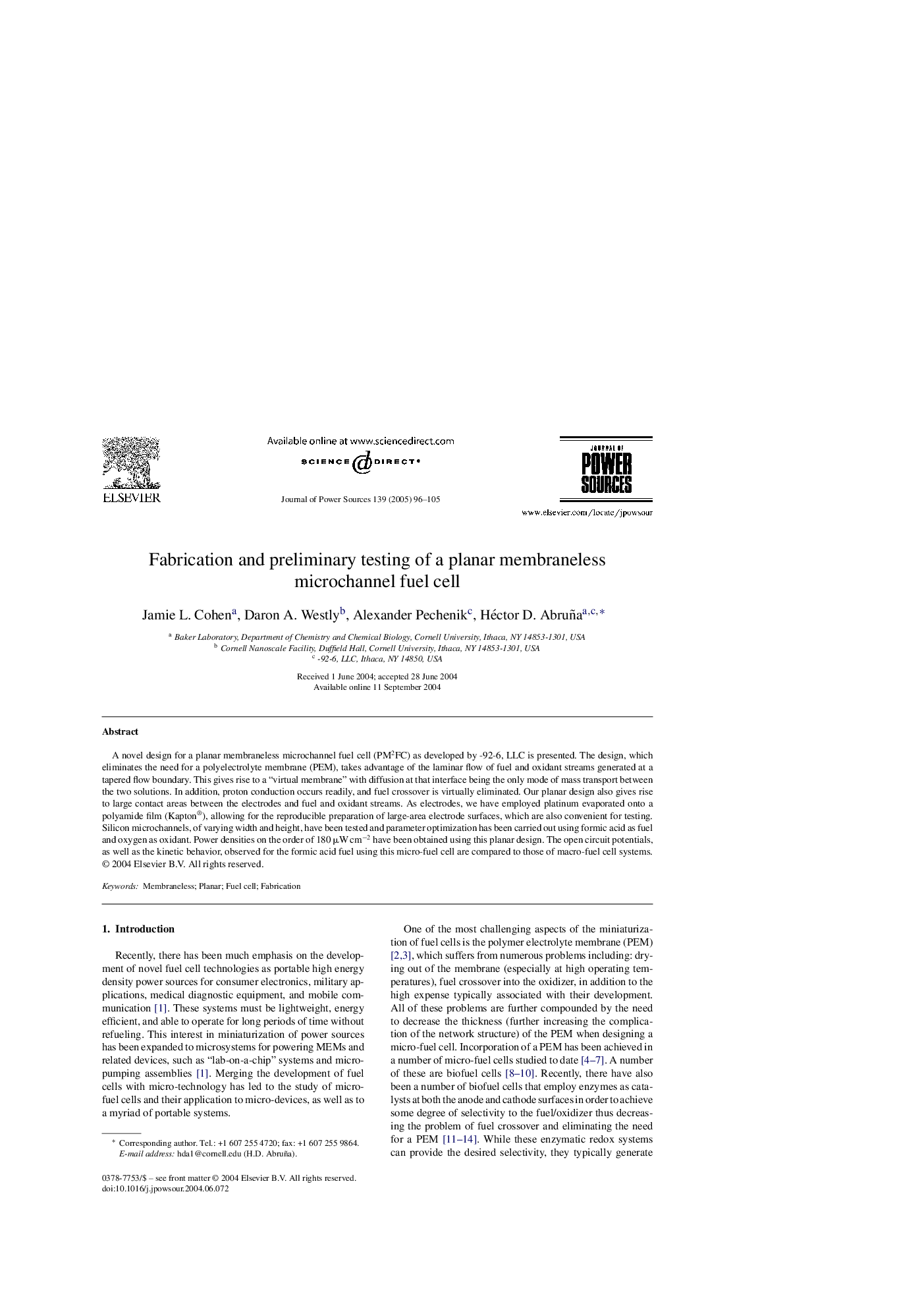| Article ID | Journal | Published Year | Pages | File Type |
|---|---|---|---|---|
| 9760504 | Journal of Power Sources | 2005 | 10 Pages |
Abstract
A novel design for a planar membraneless microchannel fuel cell (PM2FC) as developed by -92-6, LLC is presented. The design, which eliminates the need for a polyelectrolyte membrane (PEM), takes advantage of the laminar flow of fuel and oxidant streams generated at a tapered flow boundary. This gives rise to a “virtual membrane” with diffusion at that interface being the only mode of mass transport between the two solutions. In addition, proton conduction occurs readily, and fuel crossover is virtually eliminated. Our planar design also gives rise to large contact areas between the electrodes and fuel and oxidant streams. As electrodes, we have employed platinum evaporated onto a polyamide film (Kapton®), allowing for the reproducible preparation of large-area electrode surfaces, which are also convenient for testing. Silicon microchannels, of varying width and height, have been tested and parameter optimization has been carried out using formic acid as fuel and oxygen as oxidant. Power densities on the order of 180 μW cmâ2 have been obtained using this planar design. The open circuit potentials, as well as the kinetic behavior, observed for the formic acid fuel using this micro-fuel cell are compared to those of macro-fuel cell systems.
Related Topics
Physical Sciences and Engineering
Chemistry
Electrochemistry
Authors
Jamie L. Cohen, Daron A. Westly, Alexander Pechenik, Héctor D. Abruña,
